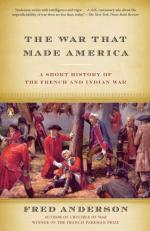|
This section contains 1,024 words (approx. 4 pages at 300 words per page) |

|
Revolutionary Style.
Among the Puritan elites of Boston and the Quaker merchants of Philadelphia the growing taste for high style and conspicuous consumption did not go unheeded. They built palatial homes and wore imported fabrics. To avoid ostentation that might clash with their religious doctrines, however, they adopted the neoclassical styles in homes and decor that were becoming popular during the revolutionary era. As republican ideas became popular in Europe and America, excessive ornamentation and showy wealth came to considered gauche. The clean lines of classic Greek and Roman architecture and furniture design (although using the best materials and finishes) came to symbolize not only good taste but also a certain political orientation. Some commentators, however, believed that high living, replete with servants, footmen, and carriages, mocked the republican simplicity of neoclassical styles.
Funerals and Simplicity.
Expressions of solidarity with the...
|
This section contains 1,024 words (approx. 4 pages at 300 words per page) |

|




